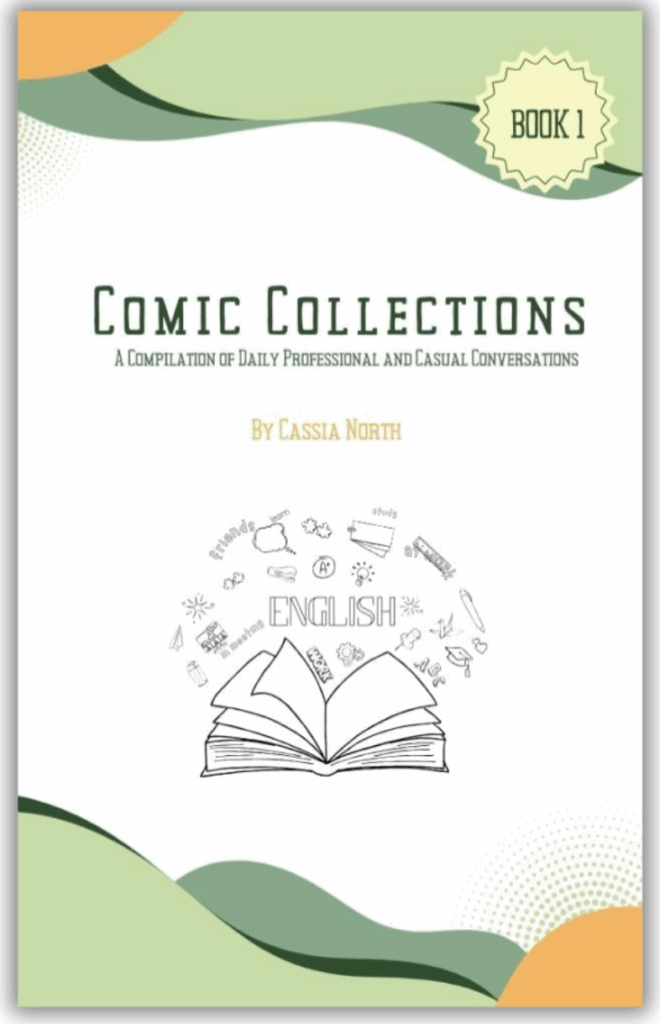
Common English Errors Blogs
"Let's Learn, Explore, and Connect to the World"

Less vs. Fewer: A Common English Mistake Unraveled
- Patricia Santos
- Common English Errors

Introduction
 English is a rich and nuanced language with subtleties that can sometimes confound even the most seasoned speakers. Among the common pitfalls that many encounter is the proper use of “less” and “fewer.” While seemingly interchangeable, these two words adhere to specific grammatical rules that distinguish them. Misusing “less” and “fewer” is a frequent error in everyday conversations, marketing materials, and the media. A clear understanding of these terms is key to effective communication.
English is a rich and nuanced language with subtleties that can sometimes confound even the most seasoned speakers. Among the common pitfalls that many encounter is the proper use of “less” and “fewer.” While seemingly interchangeable, these two words adhere to specific grammatical rules that distinguish them. Misusing “less” and “fewer” is a frequent error in everyday conversations, marketing materials, and the media. A clear understanding of these terms is key to effective communication.
 “Less” and “fewer” serve distinct functions in the English language. “Less” is used with uncountable nouns, referring to a singular mass or quantity that cannot be individually counted, such as “water,” “money,” or “time.” On the other hand, “fewer” is used with countable nouns, indicating several individual items or units, like “books,” “apples,” or “cars.” Despite their clear distinctions, their misuse is rampant, often due to a lack of awareness about these grammatical rules.
“Less” and “fewer” serve distinct functions in the English language. “Less” is used with uncountable nouns, referring to a singular mass or quantity that cannot be individually counted, such as “water,” “money,” or “time.” On the other hand, “fewer” is used with countable nouns, indicating several individual items or units, like “books,” “apples,” or “cars.” Despite their clear distinctions, their misuse is rampant, often due to a lack of awareness about these grammatical rules.
This blog aims to unravel this common English error by delving into the history, rules, common mistakes, and practical tips surrounding “less” and “fewer.” Understanding the correct usage will enhance your writing and speaking skills and ensure that your communication is accurate and effective. Dive deep with us into the world of “less” and “fewer”! We’ll unlock the secrets to mastering a common grammar challenge.
Historical Context
 The distinction between “less” and “fewer” has been part of English grammar for centuries, tracing its roots back to Old and Middle English. Historically, “less” and “fewer” were used much as they are today, with “less” being used for uncountable nouns and “fewer” for countable nouns. However, the strict application of these rules has not always been as rigid as in modern grammar.
The distinction between “less” and “fewer” has been part of English grammar for centuries, tracing its roots back to Old and Middle English. Historically, “less” and “fewer” were used much as they are today, with “less” being used for uncountable nouns and “fewer” for countable nouns. However, the strict application of these rules has not always been as rigid as in modern grammar.
 In Old English, the word “less” (derived from the Old English “lǣssa”) was commonly used in contexts where modern English would require “fewer.” Over time, a clearer distinction began to emerge as the language evolved. By the time of Middle English, around the 14th century, “fewer” (from the Old English “fēawer”) started to be used more consistently for countable nouns. This shift reflected a broader trend towards more precise grammatical structures in English.
In Old English, the word “less” (derived from the Old English “lǣssa”) was commonly used in contexts where modern English would require “fewer.” Over time, a clearer distinction began to emerge as the language evolved. By the time of Middle English, around the 14th century, “fewer” (from the Old English “fēawer”) started to be used more consistently for countable nouns. This shift reflected a broader trend towards more precise grammatical structures in English.
 The authoritarian rule that mandates using “fewer” with countable nouns and “less” with uncountable nouns was more firmly established in the 18th century. Grammarians of that era, such as Robert Lowth, played a significant role in codifying these rules. They advocated for a more standardized approach to grammar, which included the distinction between “less” and “fewer.” This period marked the beginning of modern English grammar rules, which aimed to bring clarity and consistency to the language.
The authoritarian rule that mandates using “fewer” with countable nouns and “less” with uncountable nouns was more firmly established in the 18th century. Grammarians of that era, such as Robert Lowth, played a significant role in codifying these rules. They advocated for a more standardized approach to grammar, which included the distinction between “less” and “fewer.” This period marked the beginning of modern English grammar rules, which aimed to bring clarity and consistency to the language.
 Despite these efforts, the interchangeability of “less” and “fewer” continued in informal speech and writing. Even today, phrases like “10 items or less” remain common, especially in spoken English and informal contexts. This persistence highlights language’s flexibility and evolving nature, where strict rules often give way to everyday usage.
Despite these efforts, the interchangeability of “less” and “fewer” continued in informal speech and writing. Even today, phrases like “10 items or less” remain common, especially in spoken English and informal contexts. This persistence highlights language’s flexibility and evolving nature, where strict rules often give way to everyday usage.
The evolution of “less” and “fewer” underscores the dynamic nature of English, influenced by historical changes, prescriptive grammar, and everyday usage. Understanding this historical context helps explain why the distinction between these terms can be confusing and why it remains relevant in modern grammar discussions.
Understanding the Basics
The distinction between “less” and “fewer” lies at the heart of clear and accurate English usage. Using the right words makes your communication clear and sharp, in both writing and speaking.
Definition of Less
“Less” is used with uncountable nouns, which refer to substances, qualities, or concepts that cannot be counted individually. Uncountable nouns are often singular and represent a mass or a quantity rather than discrete units.
Explanation of Use with Uncountable Nouns:
“Less” modifies nouns as a whole or a collective mass. These nouns are not plural and cannot be separated into individual items. Common examples of uncountable nouns include “water,” “money,” “time,” “sand,” and “information.” When we want to indicate a smaller quantity of such nouns, we use “less.”
Examples:

“There is less water in the bottle.”

“She has less money than she did last month.”

“We need less time to complete this project.”
In each example, the noun (“water,” “money,” “time”) is uncountable, and “less” correctly indicates a smaller quantity of the whole.
Definition of Fewer
“Fewer” is used with countable nouns, which refer to individual items that can be counted separately. We can use numbers to tell how many of something there is, because these nouns refer to things that can be individually counted. They also have both a singular and plural form.
Explanation of Use with Countable Nouns:
“Fewer” modifies nouns that represent distinct, countable entities. These nouns can be counted as individual units, making “fewer” the appropriate choice when referring to a smaller number of such items.
Examples:

“There are fewer apples in the basket.”

“She received fewer emails than yesterday.”

“We need fewer chairs for the meeting.”
In each example, the noun (“apples,” “emails,” “chairs”) is countable, and “fewer” correctly indicates a smaller number of individual items.
Examples
To further illustrate the correct usage of “less” and “fewer,” consider the following pairs of sentences:

Correct: “There is less milk in the fridge.”
Incorrect: “There are fewer milk in the fridge.”
Here, “milk” is uncountable, so “less” is used correctly.

Correct: “There are fewer students in the class.”
Incorrect: “There is less students in the class.”
Here, “students” are countable, so “fewer” is used correctly.
Another common context where the distinction is often blurred is in supermarkets and public signs:

Correct: “10 items or fewer” (referring to countable items)
Incorrect: “10 items or less.”
Understanding these fundamental differences and practicing their correct usage can help avoid common mistakes and enhance overall communication clarity. By recognizing whether a noun is countable or uncountable, you can easily determine whether to use “less” or “fewer,” ensuring precise and effective expression.
Common Mistakes
Despite the clear rules governing the use of “less” and “fewer,” these terms are frequently misused in everyday language. Understanding these common mistakes can help avoid them and use these terms correctly.
Supermarkets and Signs

One of the most noticeable and pervasive errors involving “less” and “fewer” is found in supermarkets. Many signs, especially those at express checkout lanes, often read “10 items or less.” While this phrasing is widely understood and accepted in everyday usage, it is grammatically incorrect. Since “items” are countable, the sign should read “10 items or fewer.”
Examples of Incorrect Usage in Public Places:
“10 items or less” (incorrect)
“10 items or fewer” (correct)
This error persists primarily because “less” feels more natural to many speakers, especially in quick, informal contexts like shopping. However, understanding and applying the correct usage promotes more precise and accurate communication.
Media and Advertising

The misuse of “less” and “fewer” extends beyond public signs and is prevalent in media and advertising. Advertisements often use “less” where “fewer” is appropriate, likely because “less” is shorter and sounds smoother in many slogans and promotional materials.
Analysis of Misuse in Commercials and Media:
“Buy less products, save more money” (incorrect)
“Buy fewer products, save more money” (correct)
In these instances, “products” is a countable noun, and “fewer” should be used to indicate a smaller number. The incorrect usage of media can perpetuate these mistakes, as audiences are exposed to them repeatedly.
Everyday Speech

In everyday conversation, the misuse of “less” and “fewer” is common, often due to a lack of awareness of the grammatical rules. People tend to use “less” because it is more familiar and frequently heard, leading to its use in contexts where “fewer” would be grammatically correct.
Common Spoken Errors and Why They Occur:

“I have less friends than you.” (incorrect)
“I have fewer friends than you.” (correct)

“There were less cars on the road today.” (incorrect)
“There were fewer cars on the road today.” (correct)
These errors occur because “friends” and “cars” are countable nouns, requiring the use of “fewer.” The tendency to use “less” stems from its more frequent use in the language and the fact that it often sounds more natural in casual speech.
By recognizing these common mistakes and understanding the rules that distinguish “less” from “fewer,” one can avoid errors and enhance the clarity and accuracy of communication. Whether in written or spoken form, using “less” and “fewer” correctly reflects a solid grasp of English grammar and contributes to more precise expression.
Why Correct Usage Matters
Understanding and correctly using “less” and “fewer” is more than just an exercise in grammatical precision; it has significant implications for various aspects of communication. Accurate use of these terms enhances credibility, professionalism, and clarity across different contexts.
Professional Communication

In professional settings, the correct usage of language can greatly impact how one is perceived. Whether writing emails, reports, or giving presentations, using “less” and “fewer” correctly demonstrates attention to detail and a strong command of the language. This can enhance credibility and professionalism, as colleagues and clients are more likely to respect and trust someone who communicates effectively.
Impact on Credibility and Professionalism:
- Using language correctly reflects a person’s education and attention to detail.
- Avoiding common mistakes like the misuse of “less” and “fewer” helps in establishing a professional image.
- Clear and accurate communication can lead to better business relationships and successful negotiations.
Academic Writing

In academic settings, precision in language is paramount. Academic writing demands a high level of clarity and correctness, as it contributes to the overall quality and credibility of the work. Misusing “less” and “fewer” in academic papers, theses, or research articles can undermine the perceived expertise and thoroughness of the author.
Importance in Educational Settings:
- Correct usage ensures that arguments and analyses are presented clearly and effectively.
- Academic work is often scrutinized by peers and mentors who expect rigorous adherence to grammatical standards.
- Proper use of “less” and “fewer” reflects a deeper understanding of English grammar, which is essential for high-level academic work.
General Clarity

Beyond professional and academic contexts, using “less” and “fewer” correctly contributes to overall communication clarity. Clear and precise language helps convey messages effectively, reducing the risk of misunderstandings. This is particularly important in written communication, where the absence of non-verbal cues makes precise wording crucial.
Enhancing Clarity and Precision in Communication:
- Clear communication helps in conveying ideas and instructions accurately.
- Using language correctly prevents ambiguity and ensures that the intended message is understood.
- In everyday interactions, precise language fosters better understanding and smoother exchanges.
The correct use of “less” and “fewer” is essential for effective communication. It enhances credibility and professionalism in the workplace, ensures clarity and precision in academic writing, and contributes to clearer communication in daily interactions. By paying attention to these details, one can significantly improve their language skills and make a positive impression in various contexts.
Tips and Tricks for Correct Usage
“Less” vs. “fewer” might seem tricky, but with a few handy tips, you’ll be using them like a pro in no time! Here are some helpful strategies to guide you:
Memory Aids

Mnemonics and Tricks to Remember the Rules
1. The Fewer/Less Test:
- Mnemonic: “If you can count it, use fewer.”
- Explanation: This mnemonic is simple yet effective. If the noun in question can be counted individually (like apples, books, cars), you should use “fewer.” On the other hand, if the noun represents a mass or a quantity that cannot be divided into discrete units (like water, sugar, or time), “less” is the correct term. For instance, “fewer cars” but “less traffic.”
2. Think of a Countable Counterpart:
- Mnemonic: “Fewer than a few, less than an amount.”
- Explanation: This trick involves substituting “a few” or “a little” before the noun to determine the correct word. If “a few” makes sense (e.g., “a few apples”), then “fewer” is appropriate. If “a little” fits better (e.g., “a little water”), then “less” should be used. This method helps to quickly assess which term is grammatically correct in different contexts.
3. Supermarket Aisle Tip:
- Mnemonic: “10 items or fewer in the cart.”
- Explanation: Visualize the common scenario in supermarkets where signs often erroneously read “10 items or less.” Remember that each item is countable, so the grammatically correct phrase is “10 items or fewer.” Using this everyday example reinforces the rule and makes it easier to recall in other situations.
Visual Aids

Charts and Infographics to Aid Understanding:
1. Comparison Chart:
- Explanation: A comparison chart can be an excellent visual tool to differentiate between “less” and “fewer.” Such a chart would list examples of countable and uncountable nouns alongside the correct usage. For instance, the chart could show pairs like “fewer apples” versus “less fruit,” “fewer bottles” versus “less water,” and “fewer tasks” versus “less work.” This visual representation helps to solidify understanding through concrete examples.
2. Flowcharts:
- Explanation: A flowchart can guide users through the decision-making process of choosing “less” or “fewer.” Starting with a question like “Can you count the noun?” the flowchart would direct users to the correct term based on their answer. If the answer is yes, the flowchart points to “fewer”; if no, it points to “less.” This step-by-step visual guide can be particularly helpful for learners who benefit from structured decision-making processes.
3. Infographic Summaries:
- Explanation: Infographics that summarize the rules and provide examples can be an engaging way to reinforce learning. These infographics can include colorful images, concise text, and illustrative examples that highlight the differences between “less” and “fewer.” For instance, an infographic might depict a shopping cart with “fewer items” versus a jar with “less sugar,” making the rules memorable through visual storytelling.
Real-Life Examples

Providing real-life examples of correct and incorrect usage of “less” and “fewer” from various contexts can further clarify their proper application. These examples help to see how the rules play out in everyday language and writing
1. Literature:
- Correct: “Fewer characters in this novel allow for deeper development of each one.”
- Incorrect: “Less characters in this novel allow for deeper development of each one.”
- Explanation: In literature, the distinction can be critical for clarity and precision. “Characters” are countable, so “fewer” is the correct term.
2. News:
- Correct: “The report indicated fewer incidents of crime this year.”
- Incorrect: “The report indicated less incidents of crime this year.”
- Explanation: In journalism, accuracy is paramount. “Incidents” are countable, necessitating the use of “fewer.”
3. Everyday Conversation:
- Correct: “There are fewer cookies in the jar than yesterday.”
- Incorrect: “There are less cookies in the jar than yesterday.”
- Explanation: In casual speech, while errors are more common, using “fewer” correctly when referring to countable items like “cookies” can enhance clarity and correctness.
The correct use of “less” and “fewer” is essential for effective communication. Whether in professional, academic, or everyday contexts, proper usage reflects a strong command of English and contributes to clearer, more precise expression. By employing memory aids, utilizing visual tools, and understanding the importance of context, anyone can master the distinction between these commonly confused terms. By doing so, we not only improve our language skills but also ensure that our communication is accurate and professional.
Real-Life Examples
Real-life examples of the correct and incorrect usage of “less” and “fewer” can illuminate the rules and demonstrate their application across different contexts. Here are some examples from literature, news, and everyday conversation to clarify their proper use.
Literature

In literature, precise language enhances clarity and enriches the reader’s experience. Authors often use “less” and “fewer” to describe quantities in a way that shapes the narrative effectively.
Correct: “Fewer characters in this novel allow for deeper development of each one.”
- Explanation: In this sentence, “characters” are countable entities. Using “fewer” correctly indicates a smaller number of individual characters, emphasizing the depth of character development.
Incorrect: “Less characters in this novel allow for deeper development of each one.”
- Explanation: Here, “less” is incorrectly used with the countable noun “characters.” This error can detract from the professionalism and accuracy of the writing.
News

Journalistic writing demands precision and clarity to convey information accurately. Misusing “less” and “fewer” can lead to misunderstandings or diminish the credibility of the report.
Correct: “The report indicated fewer incidents of crime this year.”
- Explanation: “Incidents” are countable occurrences, so “fewer” is the appropriate term. This usage clearly communicates a decrease in the number of incidents.
Incorrect: “The report indicated less incidents of crime this year.”
- Explanation: Using “less” with the countable noun “incidents” is incorrect. It can confuse readers and weaken the report’s reliability.
Everyday Conversation

In daily conversations, using “less” and “fewer” correctly might seem trivial, but it significantly impacts how clearly and accurately we communicate.
Correct: “There are fewer cookies in the jar than yesterday.”
- Explanation: “Cookies” are individual, countable items, so “fewer” is the right choice. This correct usage ensures that the listener understands that the number of cookies has decreased.
Incorrect: “There are less cookies in the jar than yesterday.”
- Explanation: Using “less” with the countable noun “cookies” is incorrect. It might not cause significant confusion in casual speech, but it still reflects a lack of grammatical precision.
Correct: “She has less patience than her brother.”
- Explanation: “Patience” is an uncountable noun, and using “less” correctly conveys a smaller quantity of patience.
Incorrect: “She has fewer patience than her brother.”
- Explanation: Here, “fewer” is incorrectly used with the uncountable noun “patience.” Using the wrong word here can disrupt the smooth flow of the sentence.
Understanding the difference between “less” and “fewer” and applying them correctly in various contexts ensures clear, precise communication. These real-life examples from literature, news, and everyday conversation highlight how proper usage enhances the quality of language and prevents common misunderstandings. By practicing and internalizing these rules, one can significantly improve grammatical accuracy and communication effectiveness.
Conclusion
 In the realm of English grammar, the distinction between “less” and “fewer” plays a crucial role in ensuring clarity and precision. Through this exploration, we’ve uncovered the historical context that has shaped their usage, delved into the basic rules that differentiate them, identified common mistakes, and highlighted the significance of correct usage across various contexts.
In the realm of English grammar, the distinction between “less” and “fewer” plays a crucial role in ensuring clarity and precision. Through this exploration, we’ve uncovered the historical context that has shaped their usage, delved into the basic rules that differentiate them, identified common mistakes, and highlighted the significance of correct usage across various contexts.
 Understanding that “less” is used with uncountable nouns while “fewer” is used with countable nouns is fundamental. This knowledge helps to avoid common pitfalls, such as those found in supermarkets and everyday speech. By recognizing the impact of correct usage in professional and academic settings, we appreciate how these small but significant details can enhance our credibility and effectiveness in communication.
Understanding that “less” is used with uncountable nouns while “fewer” is used with countable nouns is fundamental. This knowledge helps to avoid common pitfalls, such as those found in supermarkets and everyday speech. By recognizing the impact of correct usage in professional and academic settings, we appreciate how these small but significant details can enhance our credibility and effectiveness in communication.
 Practical tips and visual aids can make the rules easier to remember and apply. Mnemonics like “if you can count it, use fewer” or thinking of a countable counterpart are simple yet effective strategies. Visual tools like comparison charts and flowcharts can provide quick references and reinforce understanding.
Practical tips and visual aids can make the rules easier to remember and apply. Mnemonics like “if you can count it, use fewer” or thinking of a countable counterpart are simple yet effective strategies. Visual tools like comparison charts and flowcharts can provide quick references and reinforce understanding.
 Real-life examples from literature, news, and daily conversations demonstrate the importance of applying these rules correctly. They show how accurate usage not only prevents misunderstandings but also reflects a strong command of the language.
Real-life examples from literature, news, and daily conversations demonstrate the importance of applying these rules correctly. They show how accurate usage not only prevents misunderstandings but also reflects a strong command of the language.
In conclusion, mastering the use of “less” and “fewer” is more than just a grammatical exercise—it’s a step toward more effective and professional communication. By practicing these distinctions and integrating them into our daily language use, we can improve our grammar skills and enhance the clarity and precision of our expressions.
References
- DeSilver, D. (2016, May 23). “Fewer” vs. “Less”: A Lesson on Grammar and Precision. Grammarly Blog. Retrieved from https://www.grammarly.com/blog/fewer-vs-less/
- Grammarist. (n.d.). Less vs. Fewer. Retrieved from https://grammarist.com/grammar/less-fewer/
- Oxford Dictionaries. (2019). Fewer or Less? Retrieved from https://www.oxfordlearnersdictionaries.com/definition/english/fewer
- Schwartz, M. (2020, February 14). The Difference Between “Fewer” and “Less”. Merriam-Webster. Retrieved from https://www.merriam-webster.com/words-at-play/less-vs-fewer
- Ward, M. (2018, November 15). The Right Way to Use Less and Fewer. Scribendi. Retrieved from https://www.scribendi.com/advice/less_vs_fewer.en.html
Latest Blogs

Diving Into Video Editing: A Beginner’s Guide
Video Editing Blogs “Let’s Learn, Explore, and Connect to the World” Diving Into Video Editing: A Beginner’s Guide Introduction Video editing, once a skill reserved

The Connection Between Sleep and Mental Health
Mental and Emotional Health “Let’s Learn, Explore, and Connect to the World” The Connection Between Sleep and Mental Health Introduction Just like eating healthy and
Reading comprehension quiz
Check out our books and more!

English Article Collection: Understanding Business and Social Media Today
“English Article Collection: Understanding Business and Social Media Today” is your gateway to mastering this dynamic world. This meticulously curated compilation is more than just a book; it’s a journey through the realms of business awareness and social media savvy, presented in a language that speaks to beginners and experts alike.
Check out our Blogs!
Read our everyday blogs and gain new knowledge, skills, and inspiration to support your learning journey here in SEKAEL.


Explore Mental Health Blogs to gain insights and tips on self-care, emotional balance, and personal well-being.






 When giving a business presentation, how you communicate is essential for getting your ideas across well. Whether you are pitching a new idea, presenting quarterly results, or leading a team meeting, the words you choose can significantly influence your audience’s understanding and engagement. One common pitfall that presenters often encounter is the use of jargon – specialized terms that, while familiar within a particular industry, can alienate or confuse a broader audience.
When giving a business presentation, how you communicate is essential for getting your ideas across well. Whether you are pitching a new idea, presenting quarterly results, or leading a team meeting, the words you choose can significantly influence your audience’s understanding and engagement. One common pitfall that presenters often encounter is the use of jargon – specialized terms that, while familiar within a particular industry, can alienate or confuse a broader audience. In this topic, we will dig deeper into how important word choice is in business presentations, delve into the impact of jargon, and provide practical strategies for selecting the right words and avoiding jargon. By mastering these elements, you can elevate your presentations and communicate your ideas more effectively, ensuring your message resonates with any audience.
In this topic, we will dig deeper into how important word choice is in business presentations, delve into the impact of jargon, and provide practical strategies for selecting the right words and avoiding jargon. By mastering these elements, you can elevate your presentations and communicate your ideas more effectively, ensuring your message resonates with any audience.



























 Just like a well-oiled machine, employee success hinges on strong mental well-being. When their minds are healthy, they can thrive both on and off the job. In the workplace, mental health affects how individuals think, feel, and act, influencing their ability to handle stress, relate to colleagues, and make decisions. When mental health issues such as stress, anxiety, or depression are prevalent, they can lead to decreased productivity, higher absenteeism, and increased turnover rates. Flip the switch on employee performance! Fostering a culture of mental well-being leads to a surge in engagement, motivation, and productivity.
Just like a well-oiled machine, employee success hinges on strong mental well-being. When their minds are healthy, they can thrive both on and off the job. In the workplace, mental health affects how individuals think, feel, and act, influencing their ability to handle stress, relate to colleagues, and make decisions. When mental health issues such as stress, anxiety, or depression are prevalent, they can lead to decreased productivity, higher absenteeism, and increased turnover rates. Flip the switch on employee performance! Fostering a culture of mental well-being leads to a surge in engagement, motivation, and productivity. Moreover, addressing mental health proactively can lead to substantial economic benefits. A healthier workforce translates to a stronger bottom line. Fewer sick days, lower healthcare burdens, and increased productivity all contribute to the company’s financial well-being. Companies investing in mental health initiatives can expect a return on investment through a more resilient and capable workforce. Therefore, fostering a supportive mental health environment is essential for employee well-being and organizational success.
Moreover, addressing mental health proactively can lead to substantial economic benefits. A healthier workforce translates to a stronger bottom line. Fewer sick days, lower healthcare burdens, and increased productivity all contribute to the company’s financial well-being. Companies investing in mental health initiatives can expect a return on investment through a more resilient and capable workforce. Therefore, fostering a supportive mental health environment is essential for employee well-being and organizational success. Work isn’t just about building a wall, it’s about having strong foundations. Mental health is the bedrock that supports employee performance. A healthy mind fosters focus, resilience, and the ability to tackle challenges effectively. It includes emotional, psychological, and social well-being, impacting how employees think, feel, and behave. In this context, key aspects of mental health include managing stress, maintaining work-life balance, and fostering a positive work environment.
Work isn’t just about building a wall, it’s about having strong foundations. Mental health is the bedrock that supports employee performance. A healthy mind fosters focus, resilience, and the ability to tackle challenges effectively. It includes emotional, psychological, and social well-being, impacting how employees think, feel, and behave. In this context, key aspects of mental health include managing stress, maintaining work-life balance, and fostering a positive work environment. Recognizing these issues and their impact on employees’ well-being and productivity is crucial for creating a supportive work environment.
Recognizing these issues and their impact on employees’ well-being and productivity is crucial for creating a supportive work environment. Imagine a workforce where stress casts a long shadow, sapping productivity by a trillion dollars globally each year [reference WHO statistic]. In the US alone, millions bring their mental health battles to work every day [reference NIMH statistic]. It’s clear: mental well-being is no longer a personal concern, it’s a pressing business issue.
Imagine a workforce where stress casts a long shadow, sapping productivity by a trillion dollars globally each year [reference WHO statistic]. In the US alone, millions bring their mental health battles to work every day [reference NIMH statistic]. It’s clear: mental well-being is no longer a personal concern, it’s a pressing business issue. Mental health in the workplace isn’t a one-time fix, it’s a continuous conversation. We need to keep our finger on the pulse of employee well-being, staying informed about current trends and the range of challenges they face. This awareness is the foundation for creating a supportive environment that promotes the well-being and productivity of all employees.
Mental health in the workplace isn’t a one-time fix, it’s a continuous conversation. We need to keep our finger on the pulse of employee well-being, staying informed about current trends and the range of challenges they face. This awareness is the foundation for creating a supportive environment that promotes the well-being and productivity of all employees.













 In conclusion, leadership’s role in promoting mental health is multifaceted and crucial. By leading by example, fostering an inclusive culture, and effectively recognizing and addressing burnout, leaders can significantly improve their employees’ mental health and overall well-being.
In conclusion, leadership’s role in promoting mental health is multifaceted and crucial. By leading by example, fostering an inclusive culture, and effectively recognizing and addressing burnout, leaders can significantly improve their employees’ mental health and overall well-being. We can’t improve what we don’t measure! Setting clear and measurable goals for mental health initiatives is like having a roadmap. It allows us to track progress, see what’s working, and continuously refine our efforts to cultivate a thriving workplace for everyone’s well-being. These goals provide a framework for assessing progress and identifying areas for improvement.
We can’t improve what we don’t measure! Setting clear and measurable goals for mental health initiatives is like having a roadmap. It allows us to track progress, see what’s working, and continuously refine our efforts to cultivate a thriving workplace for everyone’s well-being. These goals provide a framework for assessing progress and identifying areas for improvement. 






 Using assessment data to refine and improve mental health initiatives is crucial for their long-term success. Organizations should adopt a data-driven approach to make informed decisions about their mental health strategies. This involves:
Using assessment data to refine and improve mental health initiatives is crucial for their long-term success. Organizations should adopt a data-driven approach to make informed decisions about their mental health strategies. This involves: In conclusion, measuring the impact of mental health initiatives involves setting clear goals, conducting regular assessments, and using data to make informed adjustments. This approach ensures that mental health programs are effective, responsive, and continuously improving, ultimately fostering a healthier, more productive workplace.
In conclusion, measuring the impact of mental health initiatives involves setting clear goals, conducting regular assessments, and using data to make informed adjustments. This approach ensures that mental health programs are effective, responsive, and continuously improving, ultimately fostering a healthier, more productive workplace.








 Finding the right keywords is like laying the foundation for your YouTube SEO strategy. This highlights keyword research as the crucial first step for optimizing your videos. Like magic words, including the right keywords in your content unlocks greater discoverability for your videos, attracting a wider audience. This uses a metaphor to emphasize the positive impact of keywords.
Finding the right keywords is like laying the foundation for your YouTube SEO strategy. This highlights keyword research as the crucial first step for optimizing your videos. Like magic words, including the right keywords in your content unlocks greater discoverability for your videos, attracting a wider audience. This uses a metaphor to emphasize the positive impact of keywords. In the next section, we will delve into how YouTube’s algorithm works and what factors influence video ranking.
In the next section, we will delve into how YouTube’s algorithm works and what factors influence video ranking. Understanding how YouTube’s algorithm works is essential for optimizing your videos and enhancing their discoverability. The algorithm is a complex system designed to serve users the most relevant and engaging content based on various factors. Here’s a closer look at how it operates:
Understanding how YouTube’s algorithm works is essential for optimizing your videos and enhancing their discoverability. The algorithm is a complex system designed to serve users the most relevant and engaging content based on various factors. Here’s a closer look at how it operates:





 The video title is one of those first things potential viewers see. A well-crafted title can significantly improve your video’s click-through rate (CTR). Below are the tips for creative titles:
The video title is one of those first things potential viewers see. A well-crafted title can significantly improve your video’s click-through rate (CTR). Below are the tips for creative titles: Your video description provides additional context and helps the alogortihm of YouTube’s understand what your video is all about. A well-written description can also guide viewers on what to expect, potentially increasing watch time and engagement. Here’s how to optimize your descriptions:
Your video description provides additional context and helps the alogortihm of YouTube’s understand what your video is all about. A well-written description can also guide viewers on what to expect, potentially increasing watch time and engagement. Here’s how to optimize your descriptions:
 Tags are an essential component of YouTube SEO, helping the platform understand the context and content of your video. Properly utilized tags can improve your video’s searchability and ensure it reaches the right audience.
Tags are an essential component of YouTube SEO, helping the platform understand the context and content of your video. Properly utilized tags can improve your video’s searchability and ensure it reaches the right audience. Did you know that tags provide YouTube with additional information about your video, complementing your title and description. They help categorize your content and make it easier for the algorithm to recommend your video in related searches and suggested videos.
Did you know that tags provide YouTube with additional information about your video, complementing your title and description. They help categorize your content and make it easier for the algorithm to recommend your video in related searches and suggested videos. Using irrelevant tags might seem like a way to attract more viewers, but it can backfire. Misleading tags can confuse the algorithm and lead to lower rankings. Chhoose tags that are directly relevant to your video content.
Using irrelevant tags might seem like a way to attract more viewers, but it can backfire. Misleading tags can confuse the algorithm and lead to lower rankings. Chhoose tags that are directly relevant to your video content.  Thumbnails and Click-Through Rate (CTR) are crucial factors that influence a video’s performance on YouTube. An engaging thumbnail can attract more clicks, while a high CTR indicates to YouTube that your video is relevant and interesting to viewers.
Thumbnails and Click-Through Rate (CTR) are crucial factors that influence a video’s performance on YouTube. An engaging thumbnail can attract more clicks, while a high CTR indicates to YouTube that your video is relevant and interesting to viewers. Thumbnails are the first visual impression potential viewers get of your video. An effective thumbnail should:
Thumbnails are the first visual impression potential viewers get of your video. An effective thumbnail should: CTR measures how many people who click on your video in percentage after seeing its thumbnail and title. Improving your CTR can significantly boost your video’s performance. Here’s how:
CTR measures how many people who click on your video in percentage after seeing its thumbnail and title. Improving your CTR can significantly boost your video’s performance. Here’s how:













 Even experienced users of English can get tripped up by the fine points of grammar, and one area that frequently causes confusion is the difference between “who” and “whom.” Despite their similar appearance and related functions, these two words serve distinct grammatical purposes. Misusing “who” and “whom” not only disrupts the flow of a sentence but can also undermine the clarity of communication.
Even experienced users of English can get tripped up by the fine points of grammar, and one area that frequently causes confusion is the difference between “who” and “whom.” Despite their similar appearance and related functions, these two words serve distinct grammatical purposes. Misusing “who” and “whom” not only disrupts the flow of a sentence but can also undermine the clarity of communication. In this blog, we will break down the basics of “who” and “whom,” providing clear definitions and practical examples to illustrate their proper usage. We will explore the rules that govern their application, offer tips and tricks to remember the differences and address common questions and confusions. This guide will turn you into a “who” and “whom” whiz! By the finish, you’ll be using them perfectly in any situation. Let’s delve into the grammar essentials and resolve this grammatical difficulty once and for all.
In this blog, we will break down the basics of “who” and “whom,” providing clear definitions and practical examples to illustrate their proper usage. We will explore the rules that govern their application, offer tips and tricks to remember the differences and address common questions and confusions. This guide will turn you into a “who” and “whom” whiz! By the finish, you’ll be using them perfectly in any situation. Let’s delve into the grammar essentials and resolve this grammatical difficulty once and for all. A subject pronoun is used when the pronoun is the sentence’s subject. The subject of a sentence performs the action. For example, in the sentence, “She runs every morning,” “she” is the subject pronoun acting for running. Similarly, “who” is a subject pronoun. You use “who” when referring to the person doing the action. For instance, “Who is coming to the party?” Here, “who” is the subject performing the action of coming.
A subject pronoun is used when the pronoun is the sentence’s subject. The subject of a sentence performs the action. For example, in the sentence, “She runs every morning,” “she” is the subject pronoun acting for running. Similarly, “who” is a subject pronoun. You use “who” when referring to the person doing the action. For instance, “Who is coming to the party?” Here, “who” is the subject performing the action of coming. By distinguishing between subject and object pronouns, you can accurately determine when to use “who” and “whom.” Recognizing the role each pronoun plays within the context of a sentence is crucial for proper grammatical structure and effective communication. This groundwork prepares us to explore the finer points of using “who” and “whom” through specific rules and examples.
By distinguishing between subject and object pronouns, you can accurately determine when to use “who” and “whom.” Recognizing the role each pronoun plays within the context of a sentence is crucial for proper grammatical structure and effective communication. This groundwork prepares us to explore the finer points of using “who” and “whom” through specific rules and examples.






























 Mastering the difference between “who” and “whom” is a vital step in improving your English grammar skills. Think of “who” as the star of the sentence, doing the action. “Whom” is more like the supporting cast, receiving the action. By applying the he/him test and recognizing the roles these pronouns play in sentences, you can confidently use them correctly. Regular practice and exercises will solidify your understanding and enhance your communication.
Mastering the difference between “who” and “whom” is a vital step in improving your English grammar skills. Think of “who” as the star of the sentence, doing the action. “Whom” is more like the supporting cast, receiving the action. By applying the he/him test and recognizing the roles these pronouns play in sentences, you can confidently use them correctly. Regular practice and exercises will solidify your understanding and enhance your communication.




 In the world of business, effective communication is the cornerstone of success. Whether it’s persuading potential investors, engaging colleagues during a meeting, or delivering a pitch to potential clients, the clarity of your message can significantly impact your professional image and outcomes. One crucial aspect of ensuring clear communication is the mastery of grammar, specifically subject-verb agreement and tense consistency.
In the world of business, effective communication is the cornerstone of success. Whether it’s persuading potential investors, engaging colleagues during a meeting, or delivering a pitch to potential clients, the clarity of your message can significantly impact your professional image and outcomes. One crucial aspect of ensuring clear communication is the mastery of grammar, specifically subject-verb agreement and tense consistency. Tense consistency refers to maintaining the same grammatical tense throughout a piece of writing or speech. When presenting, it’s vital to keep your tenses consistent, as shifting tenses can confuse the audience about when actions are happening. It ensures the timeline remains clear and logical, reinforcing the professionalism of the communication.
Tense consistency refers to maintaining the same grammatical tense throughout a piece of writing or speech. When presenting, it’s vital to keep your tenses consistent, as shifting tenses can confuse the audience about when actions are happening. It ensures the timeline remains clear and logical, reinforcing the professionalism of the communication. Subject-verb agreement is one of the key components of English grammar, ensuring that the verb in a sentence matches its subject in both number and person. This alignment is crucial for the clarity and correctness of any communication, especially in business environments where precision in language reflects professionalism and competence.
Subject-verb agreement is one of the key components of English grammar, ensuring that the verb in a sentence matches its subject in both number and person. This alignment is crucial for the clarity and correctness of any communication, especially in business environments where precision in language reflects professionalism and competence.


 In business presentations, the effective use of tenses not only clarifies the timeline of events but also helps in setting the tone and engaging the audience. Mastery over tense usage is integral to delivering clear and professional presentations that leave a lasting impression.
In business presentations, the effective use of tenses not only clarifies the timeline of events but also helps in setting the tone and engaging the audience. Mastery over tense usage is integral to delivering clear and professional presentations that leave a lasting impression.






 Create a list of sentences that include errors in subject-verb agreement and tense usage. Practice rewriting them correctly. This can be done as part of a daily writing exercise or incorporated into team training sessions.
Create a list of sentences that include errors in subject-verb agreement and tense usage. Practice rewriting them correctly. This can be done as part of a daily writing exercise or incorporated into team training sessions. Organize regular peer review sessions where team members present short talks or written content. Peers can provide feedback specifically on grammar and tense usage, helping each other identify and correct common mistakes.
Organize regular peer review sessions where team members present short talks or written content. Peers can provide feedback specifically on grammar and tense usage, helping each other identify and correct common mistakes. Employ grammar checking tools as part of the drafting process for presentations and documents. These tools can catch inconsistencies and errors that may be overlooked during manual editing.
Employ grammar checking tools as part of the drafting process for presentations and documents. These tools can catch inconsistencies and errors that may be overlooked during manual editing. Conduct role-playing exercises where participants prepare and deliver brief presentations. Focus the feedback on how well they integrate subject-verb agreement and tense consistency, providing concrete examples and corrections.
Conduct role-playing exercises where participants prepare and deliver brief presentations. Focus the feedback on how well they integrate subject-verb agreement and tense consistency, providing concrete examples and corrections.







 Throughout this blog, we have talked about the essential grammatical principles of subject-verb agreement and tense consistency, underlining their significance in the context of business presentations. By understanding and correctly applying these rules, professionals can communicate their ideas more clearly and effectively, enhancing the overall impact of their presentations.
Throughout this blog, we have talked about the essential grammatical principles of subject-verb agreement and tense consistency, underlining their significance in the context of business presentations. By understanding and correctly applying these rules, professionals can communicate their ideas more clearly and effectively, enhancing the overall impact of their presentations. The discussion on tense consistency highlighted how the careful selection of tenses can provide clarity about the timeline of events discussed during presentations. We reviewed how to choose the appropriate tense to reflect past, present, or future activities, reinforcing the narrative’s coherence. Real-life examples illustrated the impact of these grammatical elements on the professionalism and clarity of business communications.
The discussion on tense consistency highlighted how the careful selection of tenses can provide clarity about the timeline of events discussed during presentations. We reviewed how to choose the appropriate tense to reflect past, present, or future activities, reinforcing the narrative’s coherence. Real-life examples illustrated the impact of these grammatical elements on the professionalism and clarity of business communications. Moreover, we delved into advanced tools and techniques for enhancing grammatical skills, from online resources like Grammarly and the Purdue OWL to daily practices such as reading high-quality literature and engaging in regular writing exercises. These tools not only aid in correcting errors but also in understanding the underlying rules, which is crucial for long-term improvement.
Moreover, we delved into advanced tools and techniques for enhancing grammatical skills, from online resources like Grammarly and the Purdue OWL to daily practices such as reading high-quality literature and engaging in regular writing exercises. These tools not only aid in correcting errors but also in understanding the underlying rules, which is crucial for long-term improvement.



 Happiness is a fundamen’tal human pursuit deeply ingrained in our cultural and individual aspirations. It significantly impacts our overall well-being, influencing our physical health, relationships, and productivity. Achieving lasting happiness can be complex and often elusive despite its universal appeal. Let’s unlock the secrets of happiness! This blog dives into the psychology of joy. Understanding the underlying principles and applying practical strategies can cultivate joy and enhance your daily experiences. Whether through mindfulness, gratitude, or strengthening social connections, these insights will help you navigate a more fulfilling and content life. Join us on this journey to uncover the secrets of happiness and learn how to integrate them into your everyday routine for lasting positive ch
Happiness is a fundamen’tal human pursuit deeply ingrained in our cultural and individual aspirations. It significantly impacts our overall well-being, influencing our physical health, relationships, and productivity. Achieving lasting happiness can be complex and often elusive despite its universal appeal. Let’s unlock the secrets of happiness! This blog dives into the psychology of joy. Understanding the underlying principles and applying practical strategies can cultivate joy and enhance your daily experiences. Whether through mindfulness, gratitude, or strengthening social connections, these insights will help you navigate a more fulfilling and content life. Join us on this journey to uncover the secrets of happiness and learn how to integrate them into your everyday routine for lasting positive ch







 Being present in the moment, without judgment, is a superpower! It helps us chill out by reducing stress, managing emotions like a boss, and boosting overall well-being. By focusing on the “now,” mindfulness breaks the cycle of negativity and worries about the past or future.
Being present in the moment, without judgment, is a superpower! It helps us chill out by reducing stress, managing emotions like a boss, and boosting overall well-being. By focusing on the “now,” mindfulness breaks the cycle of negativity and worries about the past or future.


 Saying “thanks” isn’t just good manners, it’s a happiness booster! Taking time to appreciate the good things in life, big or small, is a powerful way to improve your overall well-being. Studies even show gratitude can lead to more happiness, less stress, and even better physical health.
Saying “thanks” isn’t just good manners, it’s a happiness booster! Taking time to appreciate the good things in life, big or small, is a powerful way to improve your overall well-being. Studies even show gratitude can lead to more happiness, less stress, and even better physical health.





 Unleashing your best self is key to lasting happiness. The more you learn and grow, the more fulfilled you’ll feel in the long run. Engaging in activities that align with your values and pursuing goals that foster self-improvement can provide a deep sense of purpose and fulfillment. This continuous growth journey helps individuals better understand themselves, enhance their capabilities, and ultimately lead more satisfying lives.
Unleashing your best self is key to lasting happiness. The more you learn and grow, the more fulfilled you’ll feel in the long run. Engaging in activities that align with your values and pursuing goals that foster self-improvement can provide a deep sense of purpose and fulfillment. This continuous growth journey helps individuals better understand themselves, enhance their capabilities, and ultimately lead more satisfying lives.







 Cultivating happiness is an ongoing journey that requires conscious effort and practice. You can significantly enhance your well-being by understanding the psychology of happiness and implementing practical strategies such as mindfulness, gratitude, and maintaining meaningful relationships. Don’t underestimate the power of small steps. Over time, consistent changes, even if they seem little, can have a major impact on your happiness and well-being. Start by setting achievable goals, practicing positive habits, and regularly reviewing your progress. Remember, happiness is not a destination but a continuous process of growth and self-discovery. Embrace this journey with patience and openness; gradually, you will build a more joyful and fulfilling life. These steps today can set the foundation for lasting happiness and a richer, more satisfying existence.
Cultivating happiness is an ongoing journey that requires conscious effort and practice. You can significantly enhance your well-being by understanding the psychology of happiness and implementing practical strategies such as mindfulness, gratitude, and maintaining meaningful relationships. Don’t underestimate the power of small steps. Over time, consistent changes, even if they seem little, can have a major impact on your happiness and well-being. Start by setting achievable goals, practicing positive habits, and regularly reviewing your progress. Remember, happiness is not a destination but a continuous process of growth and self-discovery. Embrace this journey with patience and openness; gradually, you will build a more joyful and fulfilling life. These steps today can set the foundation for lasting happiness and a richer, more satisfying existence.







 In summary, conversion tracking is essential for understanding the impact of your Facebook advertising efforts. By properly configuring the Facebook pixel, defining custom conversions, and leveraging Aggregated Event Measurement, marketers can gain a clearer view of user actions and align their strategies to maximize campaign performance and business impact.
In summary, conversion tracking is essential for understanding the impact of your Facebook advertising efforts. By properly configuring the Facebook pixel, defining custom conversions, and leveraging Aggregated Event Measurement, marketers can gain a clearer view of user actions and align their strategies to maximize campaign performance and business impact.
 Facebook’s Attribution tool lets you see the big picture of how various marketing efforts on different platforms contribute to sales or other desired actions. Whether it’s paid advertising, organic social media, email marketing, or direct website traffic, these multi-channel insights enable you to see the combined impact of your marketing efforts.
Facebook’s Attribution tool lets you see the big picture of how various marketing efforts on different platforms contribute to sales or other desired actions. Whether it’s paid advertising, organic social media, email marketing, or direct website traffic, these multi-channel insights enable you to see the combined impact of your marketing efforts. In today’s multi-device world, users often interact with your brand on desktops, smartphones, and tablets before making a purchase. Facebook Attribution’s cross-device reporting helps you trace the customer journey across all devices, providing a more comprehensive view of user behavior and uncovering conversion opportunities.
In today’s multi-device world, users often interact with your brand on desktops, smartphones, and tablets before making a purchase. Facebook Attribution’s cross-device reporting helps you trace the customer journey across all devices, providing a more comprehensive view of user behavior and uncovering conversion opportunities. By effectively utilizing the Facebook Attribution tool, you can have a grasp of a comprehensive understanding of your campaigns’ performance, refine your marketing strategy, and attribute conversions more accurately across channels and devices.
By effectively utilizing the Facebook Attribution tool, you can have a grasp of a comprehensive understanding of your campaigns’ performance, refine your marketing strategy, and attribute conversions more accurately across channels and devices.

 Mastering Facebook Analytics and conversion tracking is essential for any marketer aiming to attribute sales and leads back to their efforts. By utilizing tools like Facebook Attribution, pixel tracking, and detailed funnel analysis, by leveraging data and understanding customer journeys, marketers can refine their campaigns for maximum impact. Following the best practices outlined in this guide will help you maximize ROI, refine your marketing strategies, and align your campaigns with your business objectives. While the process may seem complex, the rewards of correctly attributing conversions to your Facebook marketing efforts are invaluable, ensuring that every dollar spent is delivering measurable value to your bottom line.
Mastering Facebook Analytics and conversion tracking is essential for any marketer aiming to attribute sales and leads back to their efforts. By utilizing tools like Facebook Attribution, pixel tracking, and detailed funnel analysis, by leveraging data and understanding customer journeys, marketers can refine their campaigns for maximum impact. Following the best practices outlined in this guide will help you maximize ROI, refine your marketing strategies, and align your campaigns with your business objectives. While the process may seem complex, the rewards of correctly attributing conversions to your Facebook marketing efforts are invaluable, ensuring that every dollar spent is delivering measurable value to your bottom line.